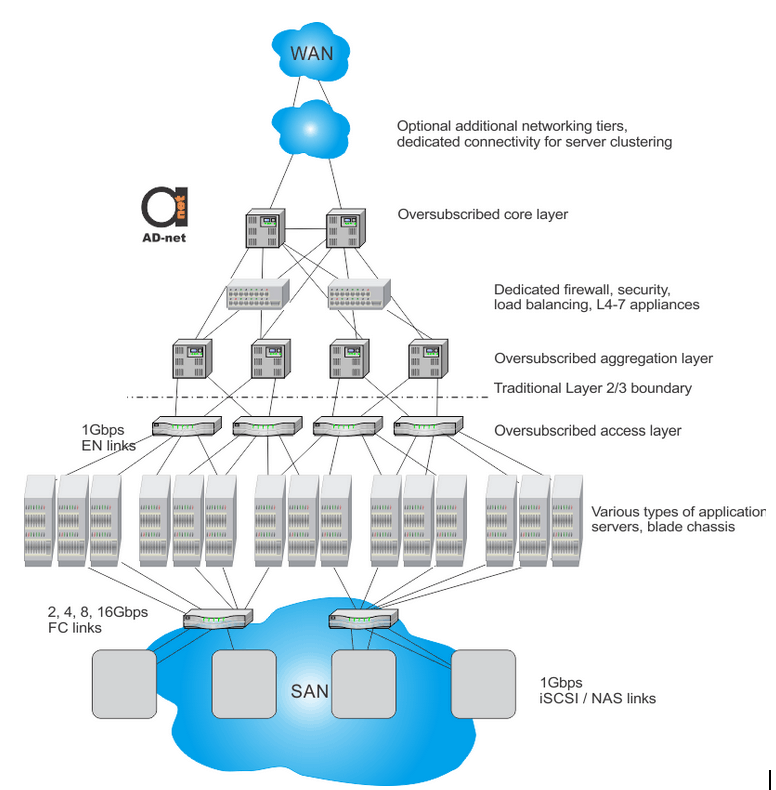As Figure 1 specifies, Ethernet network, traditionally is hierarchical, having multiple tiers. Each tier is having its own design, that do not need to be combined with other tier designs. Multitiering is the process of data movement between tiers. Traditional data movement is up and down the logical tree in Ethernet. In order to prevent data transmission loops, the STP was introduced.
For the modern networking project “flat” networks are more acceptable than traditional ones. In flat network most of the tiers are removed, leaving only core switches and access switches. While devices are on the same level in flat network, they require no intermediate router for data transmission between each other. Flat network allows efficiently use all available resources, at all the times.

Figure 1. Design of a conventional multitier data center network.
Since the networking tiers that are common for the traditional systems are removed the price of the system implementation is reduced. Another money-saver is elimination of switches and adapters that were necessary for dedicated storage, cluster, and management in traditional Ethernet.
Traditional systems were having many different tools for management different parts of data center. In flat network it is advised to use simplified management architecture. One tool allows to discover, manage, provision, configure, report errors across the enterprise. This approach helps optimizing application performance and ensure confidentiality of information.


